- Home
- Ursula K. Le Guin
Changing Planes Page 2
Changing Planes Read online
Page 2
Ai Li A Le was sitting at one of the outside tables at the café (the cledifac) next door to the one where she waited tables. She smiled and beckoned to me, and I sat down with her. She had a small bowl of chilled cledif with sweet spices, and I ordered the same. “Please tell me about the Ban,” I asked her.
“We used to look like you,” she said.
“What happened?”
“Well,” she said, and hesitated. “We like science. We like engineering. We are good engineers. But perhaps we are not very good scientists.”
To summarise her story: the Islai had been strong on practical physics, agriculture, architecture, urban development, engineering, invention, but weak in the life sciences, history, and theory. They had their Edisons and Fords but no Darwin, no Mendel. When their airports got to be just like ours, if not worse, they began to travel between planes; and on some plane, about a hundred years ago, one of their scientists discovered applied genetics. He brought it home. It fascinated them. They promptly mastered its principles. Or perhaps they had not quite mastered them before they started applying them to every life-form within reach.
“First,” she said, “to plants. Altering food plants to be more fruitful, or to resist bacteria and viruses, or to kill insects, and so on.”
I nodded. “We’re doing a good deal of that too,” I said.
“Really? Are you . . .” She seemed not to know how to ask the question she wanted to ask. “I’m corn, myself,” she said at last, shyly.
I checked the translatomat. Uslu: corn, maize. I checked the dictionary, and it said that uslu on Islac and maize on my plane were the same plant.
I knew that the odd thing about corn is that it has no wild form, only a distant wild ancestor that you’d never recognise as corn. It’s entirely a construct of long-term breeding by ancient gatherers and farmers. An early genetic miracle. But what did it have to do with Ai Li A Le?
Ai Li A Le with her wonderful, thick, gold-colored, corn-colored hair cascading in braids from a topknot . . .
“Only four percent of my genome,” she said. “There’s about half a percent of parrot, too, but it’s recessive. Thank God.”
I was still trying to absorb what she had told me. I think she felt her question had been answered by my astonished silence.
“They were utterly irresponsible,” she said severely. “With all their programs and policies and making everything better, they were fools. They let all kinds of things get loose and interbreed. Wiped out rice in one decade. The improved breeds went sterile. The famines were terrible . . . Butterflies, we used to have butterflies, do you have them?”
“Some, still,” I said.
“And deletu?” A kind of singing firefly, now extinct, said my translatomat. I shook my head wistfully.
She shook her head wistfully.
“I never saw a butterfly or a deletu. Only pictures . . . The insecticidal clones got them . . . But the scientists learned nothing—nothing! They set about improving the animals. Improving us! Dogs that could talk, cats that could play chess! Human beings who were going to be all geniuses and never get sick and live five hundred years! They did all that, oh yes, they did all that. There are talking dogs all over the place, unbelievably boring they are, on and on and on about sex and shit and smells, and smells and shit and sex, and do you love me, do you love me, do you love me. I can’t stand talking dogs. My big poodle Rover, he never says a word, the dear good soul. And then the humans! We’ll never, ever get rid of the Premier. He’s a Healthy, a bloody GAPA. He’s ninety now and looks thirty and he’ll go on looking thirty and being premier for four more centuries. He’s a pious hypocrite and a greedy, petty, stupid, mean-minded crook. Just the kind of man who ought to be siring children for five centuries . . . The Ban doesn’t apply to him . . . But still, I’m not saying the Ban was wrong. They had to do something. Things were really awful, fifty years ago. When they realised that genetic hackers had infiltrated all the laboratories, and half the techs were Bioist fanatics, and the Godsone Church had all those secret factories in the eastern hemisphere deliberately turning out genetic melds . . . Of course most of those products weren’t viable. But a lot of them were . . . The hackers were so good at it. The chicken people, you’ve seen them?”
As soon as she asked, I realised that I had: short, squat people who ran around in intersections squawking, so that all the traffic gridlocked in an effort not to run them over. “They just make me want to cry,” Ai Li A Le said, looking as if she wanted to cry.
“So the Ban forbade further experimentation?” I asked.
She nodded. “Yes. Actually, they blew up the laboratories. And sent the Bioists for reeducation in the Gubi. And jailed all the Godsone Fathers. And most of the Mothers too, I guess. And shot the geneticists. And destroyed all the experiments in progress. And the products, if they were”—she shrugged—“‘too far from the norm.’ The norm!” She scowled, though her sunny face was not made for scowling. “We don’t have a norm anymore. We don’t have species any more. We’re a genetic porridge. When we plant maize, it comes up weevil-repellent clover that smells like chlorine. When we plant an oak, it comes up poison oak fifty feet high with a ten-foot-thick trunk. And when we make love we don’t know if we’re going to have a baby, or a foal, or a cygnet, or a sapling. My daughter—” and she paused. Her face worked and she had to compress her lips before she could go on. “My daughter lives in the North Sea. On raw fish. She’s very beautiful. Dark and silky and beautiful. But—I had to take her to the seacoast when she was two years old. I had to put her in that cold water, those big waves. I had to let her swim away, let her go be what she is. But she is human too! She is, she is human too!”
She was crying, and so was I.
After a while, Ai Li A Le went on to tell me how the Genome Collapse had led to profound economic depression, only worsened by the Purity Clauses of the Ban, which restricted jobs in the professions and government to those who tested 99.44% human—with exceptions for Healthies, Righteous Ones, and other GAPAs (Genetically Altered Products Approved by the Emergency Government). This was why she was working as a waitress. She was four percent maize.
“Maize was once the holy plant of many people, where I come from,” I said, hardly knowing what I said. “It is such a beautiful plant. I love everything made out of corn—polenta, hoecake, cornbread, tortillas, canned corn, creamed corn, hominy, grits, corn whiskey, corn chowder, on the cob, tamales—it’s all good. All good, all kind, all sacred. I hope you don’t mind if I talk about eating it!”
“Heavens no,” said Ai Li A Le, smiling. “What did you think cledif was made from?”
After a while I asked her about teddy bears. That phrase of course meant nothing to her, but when I described the creature in my bookcase she nodded—“Oh yes! Bookbears. Early on, when the genetic designers were making everything better, you know, they dwarfed bears way down for children’s pets. Like toys, stuffed animals, only they were alive. Programmed to be passive and affectionate. But some of the genes they used for dwarfing came from insects—springtails and earwigs. And the bears began to eat the children’s books. At night, while they were supposed to be cuddling in bed with the children, they’d go eat their books. They like paper and glue. And when they bred, the offspring had long tails, like wires, and a sort of insect jaw, so they weren’t much good for the children anymore. But by then they’d escaped into the woodwork, between the walls . . . Some people call them bearwigs.”
I have been back to Islac several times to see Ai Li A Le. It is not a happy plane, or a reassuring one, but I would go to worse places than Islac to see so kind a smile, such a topknot of gold, and to drink maize with the woman who is maize.
The Silence of the Asonu
The silence of the Asonu is proverbial. The first visitors to their plane believed that these gracious, gracile people were mute, lacking any language other than that of gesture, expression, and gaze. Later, hearing Asonu children chatter, the visitors suspected that among t
hemselves the adults spoke, keeping silence only with strangers. We know now that the Asonu are not dumb, but that once past early childhood they speak very rarely to anyone, under any circumstances. They do not write; and unlike mutes, or monks under vows of silence, they do not use any signs or other devices in place of speaking.
This nearly absolute abstinence from language makes them fascinating.
People who live with animals value the charm of muteness. It can be a real pleasure to know when the cat walks into the room that he won’t mention any of your shortcomings, or that you can tell your grievances to your dog without his repeating them to the people who caused them.
Those who can’t talk, and those who can talk but don’t, have the great advantage over the rest of us in that they never say anything stupid. This may be why we are convinced that if they spoke they would have something wise to say.
Thus there has come to be considerable tourist traffic to the Asonu. Having a strong tradition of hospitality, the Asonu entertain their visitors with generosity and courtesy, though without modifying their own customs.
Some tourists go there simply in order to join the natives in their silence, grateful to spend a few weeks where they do not have to festoon and obscure every human meeting with verbiage. Many such visitors, having been accepted into a household as a paying guest, return year after year, forming bonds of unspoken affection with their quiet hosts.
Others follow their Asonu guides or hosts about, talking to them hour after hour, confiding their whole life to them, in rapture at having at last found a listener who won’t interrupt or comment or mention that his cousin had an even larger tumor than that. As such people usually know little Asonu and speak entirely in their own language, they evidently aren’t worried by the question that vexes some visitors: Since the Asonu don’t talk, do they, in fact, listen?
They certainly hear and understand what is said to them in their own language, since they’re prompt to respond to their children, to indicate directions by gesture to the halting and mispronounced inquiries of tourists, and to leave a building at the cry of “Fire!” But the question remains, do they listen to discursive speech and sociable conversation, or do they merely hear it while keeping silently attentive to something beyond speech? Their amiable and apparently easy manner seems to some observers the placid surface of a deep preoccupation, a constant alertness, like that of a mother who while entertaining her guests or seeing to her husband’s comfort is listening every moment for the cry of her baby in another room.
To perceive the Asonu thus is almost inevitably to interpret their silence as a concealment. As they grow up, it seems, they cease to speak because they are listening to something we do not hear, a secret which their silence hides.
Some visitors to their world are convinced that the lips of these quiet people are locked upon a knowledge which, in proportion as it is hidden, must be valuable—a spiritual treasure, a speech beyond speech, possibly even that ultimate revelation promised by so many religions, and indeed frequently delivered, but never in a wholly communicable form. The transcendent knowledge of the mystic cannot be expressed in language. It may be that the Asonu avoid language for this very reason.
It may be that they keep silence because if they spoke, everything of importance would have been said.
Believers in the Wisdom of the Asonu have followed individuals about for years, waiting for the rare words they speak, writing them down, saving them, studying them, arranging and collating them, finding arcane meanings and numerical correspondences in them, in search of the hidden message. To some, however, these utterances do not seem to be as momentous as one might expect from their rarity. They might even be described as banal.
There is no written form of the Asonu language, and translation of speech is considered to be so uncertain that translatomats aren’t issued to the tourists, most of whom don’t want them anyway. Those who wish to learn Asonu can do so only by listening to and imitating children, who by six or seven years old are already becoming unhappy when asked to talk.
Here are the Eleven Sayings of the Elder of Isu, collected over four years by a devotee from Ohio, who had already spent six years learning the language from the children of the Isu Group. Months of silence occurred between most of these statements, and two years between the fifth and sixth.
Not there.
It is almost ready [or] Be ready for it soon.
Unexpected!
It will never cease.
Yes.
When?
It is very good.
Perhaps.
Soon.
Hot! [or] Very warm!
It will not cease.
The devotee wove these eleven sayings into a coherent spiritual statement or testament which he understood the Elder to have been making, little by little, during the last four years of his life. The Ohio Reading of the Sayings of the Elder of Isu is as follows:
(1) What we seek is not in any object or experience of our mortal life. We live among appearances, on the verge of the Spiritual Truth. (2) We must be as ready for it as it is ready for us, for (3) it will come when we least expect it. Our perception of the Truth is sudden as a lightning flash, but (4) the Truth itself is eternal and unchanging. (5) Indeed we must positively and hopefully, in a spirit of affirmation, (6) continually ask when, when shall we find what we seek? (7) For the Truth is the medicine for our soul, the knowledge of absolute goodness. (8, 9) It may come very soon. Perhaps it is coming even now in this moment. (10) Its warmth and brightness are as those of the sun, but the sun will perish (11) and the Truth will not perish. Never will the warmth, the brightness, the goodness of the Truth cease or fail us.
Another interpretation of the Sayings may be made by referring to the circumstances in which the Elder spoke, faithfully recorded by the devotee from Ohio, whose patience was equaled only by the Elder’s:
Spoken in an undertone as the Elder looked through a chest of clothing and ornaments.
Spoken to a group of children on the morning of a ceremony.
Said with a laugh in greeting the Elder’s younger sister, returned from a long trip.
Spoken the day after the burial of the Elder’s sister.
Said while embracing the Elder’s brother-in-law some days after the funeral.
Asked of an Asonu “doctor” who was making a “spirit-body” drawing in white and black sand for the Elder. These drawings seem to be both curative and diagnostic, but we know very little about them. The observer states that the doctor’s answer was a short curving line drawn outward from the navel of the spirit-body figure. This, however, may be only the observer’s reading of what was not an answer at all.
Said to a child who had woven a reed mat.
Spoken in answer to a young grandchild who asked, “Will you be at the big feast, Grandmother?”
Spoken in answer to the same child, who asked, “Are you going to be dead like Great-Auntie?”
Said to a baby who was toddling towards a firepit where the flames were invisible in the sunlight.
Last words, spoken the day before the Elder’s death.
The last six Sayings were all spoken in the last half year of the Elder’s life, as if the approach of death had made the Elder positively loquacious. Five of the Sayings were spoken to, or at least in the presence of, young children who were still at the talking stage.
Speech from an adult must be very impressive to an Asonu child. Like the foreign linguists, Asonu babies learn the language by listening to older children. The mother and other adults encourage the child to speak only by attentive listening and prompt, affectionate, wordless response.
The Asonu live in close-knit, extended-family groups, in frequent contact with other groups. Their pasturing life, following the great flocks of anamanu which furnish them wool, leather, milk, and meat, leads them on a ceaseless seasonal nomadic circuit within a vast shared territory of mountains and foothills. Families frequently leave their groups to go wandering and visiting. A
t the great festivals and ceremonies of healing and renewal many groups come together for days or weeks, exchanging hospitality. No hostile relations between groups are apparent, and in fact no observer has reported seeing adult Asonu fight or quarrel. Arguments clearly are out of the question.
Children from two to six years old chatter to each other constantly; they argue, wrangle, bicker, quarrel, and sometimes come to blows. As they reach six or seven they begin to speak less and quarrel less. By the time they are eight or nine most of them are very shy of words and reluctant to answer a question except by gesture. They have learned to quietly evade inquiring tourists and linguists with notebooks and recording devices. By adolescence they are as silent and as peaceable as the adults.
Children between eight and twelve do most of the looking after the younger ones. All the sub-adolescent children of the family group go about together, and in such groups the two-to-six-year-olds provide language models for the babies. Older children shout wordlessly in the excitement of a game of tag or hide-and-seek, and sometimes scold an errant toddler with a “Stop!” or “No!”—just as the Elder of Isu murmured “Hot!” when a child approached an invisible fire; though of course the Elder may have been using that circumstance as a parable, in order to make a statement of profound spiritual meaning, as appears in the Ohio Reading.

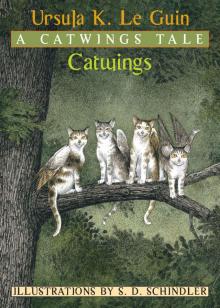 Catwings
Catwings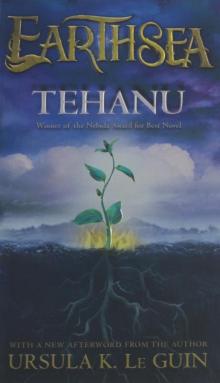 Tehanu
Tehanu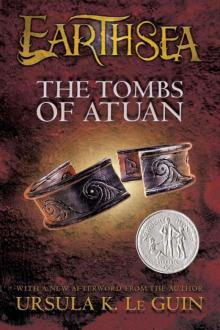 The Tombs of Atuan
The Tombs of Atuan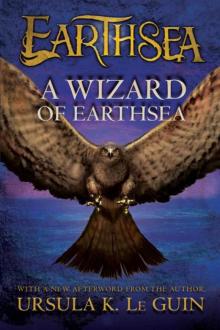 A Wizard of Earthsea
A Wizard of Earthsea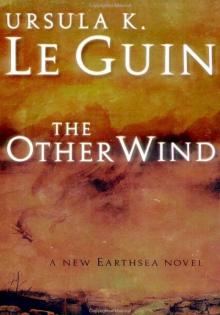 The Other Wind
The Other Wind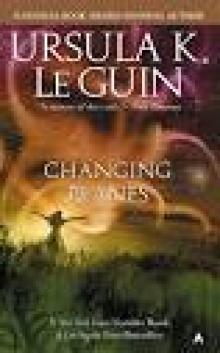 Ursula K. Le Guin
Ursula K. Le Guin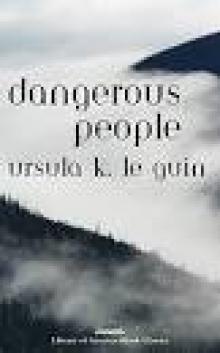 Dangerous People
Dangerous People Worlds of Exile and Illusion: Rocannon's World, Planet of Exile, City of Illusions
Worlds of Exile and Illusion: Rocannon's World, Planet of Exile, City of Illusions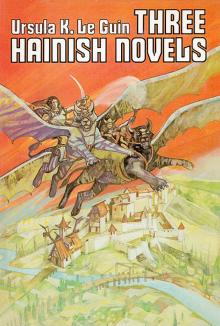 Three Hainish Novels
Three Hainish Novels The Left Hand Of Darkness (SF Masterworks)
The Left Hand Of Darkness (SF Masterworks)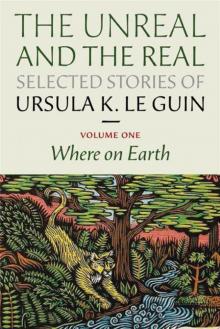 The Unreal and the Real - Vol 1 - Where On Earth
The Unreal and the Real - Vol 1 - Where On Earth The Visionary
The Visionary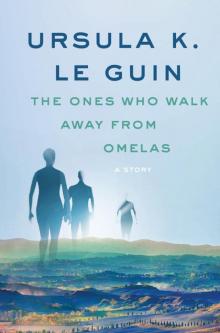 The Ones Who Walk Away from Omelas
The Ones Who Walk Away from Omelas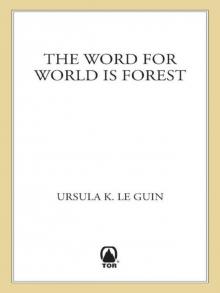 The Word for World is Forest
The Word for World is Forest Always Coming Home
Always Coming Home The Unreal and the Real - Vol 2 - Outer Space, Inner Lands
The Unreal and the Real - Vol 2 - Outer Space, Inner Lands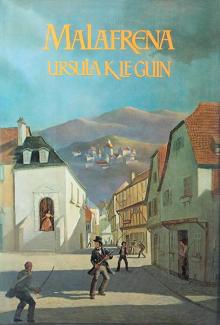 Malafrena
Malafrena The Lathe of Heaven
The Lathe of Heaven Five Ways to Forgiveness
Five Ways to Forgiveness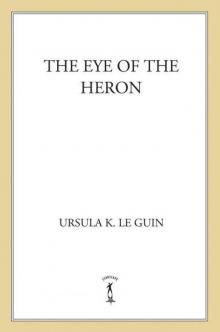 The Eye of the Heron
The Eye of the Heron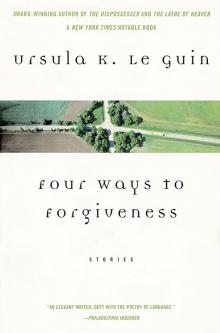 Four Ways to Forgiveness
Four Ways to Forgiveness Powers
Powers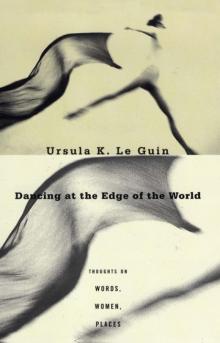 Dancing at the Edge of the World
Dancing at the Edge of the World Very Far Away from Anywhere Else
Very Far Away from Anywhere Else Voices aotws-2
Voices aotws-2 The New Atlantis
The New Atlantis The Unreal and the Real, Selected Stories of Ursula K. Le Guin Volume 1: Where on Earth
The Unreal and the Real, Selected Stories of Ursula K. Le Guin Volume 1: Where on Earth The Telling
The Telling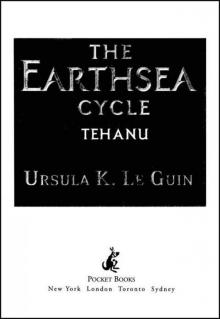 Tehanu (Earthsea Cycle)
Tehanu (Earthsea Cycle)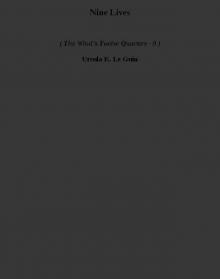 Nine Lives twtq-9
Nine Lives twtq-9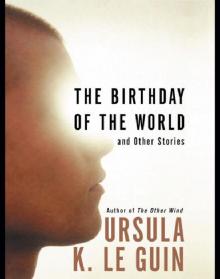 The Birthday of the World and Other Stories
The Birthday of the World and Other Stories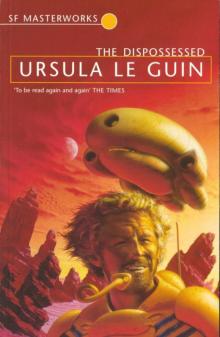 The Dispossessed
The Dispossessed Changing Planes
Changing Planes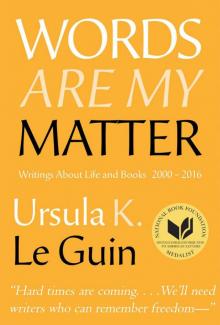 Words Are My Matter
Words Are My Matter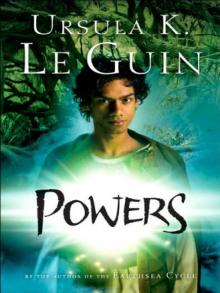 Powers aotws-3
Powers aotws-3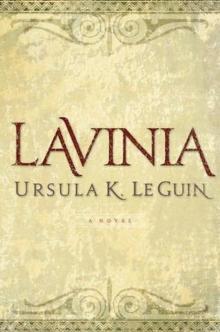 Lavinia
Lavinia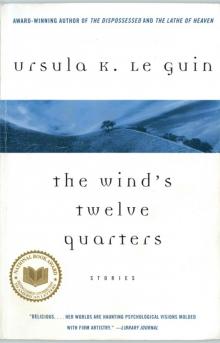 The Wind's Twelve Quarters
The Wind's Twelve Quarters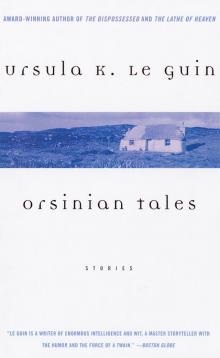 Orsinian Tales
Orsinian Tales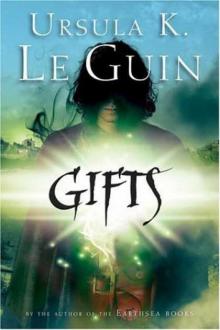 Gifts aotws-1
Gifts aotws-1 Coming of Age in Karhide
Coming of Age in Karhide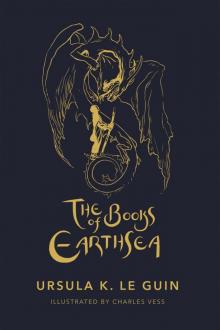 The Books of Earthsea: The Complete Illustrated Edition
The Books of Earthsea: The Complete Illustrated Edition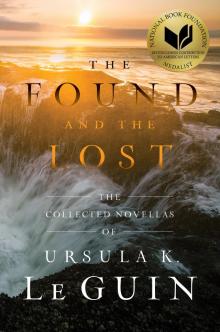 The Found and the Lost
The Found and the Lost No Time to Spare
No Time to Spare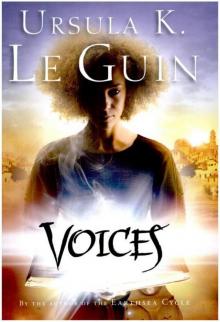 Voices
Voices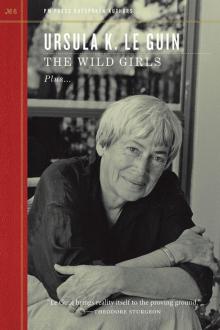 The Wild Girls
The Wild Girls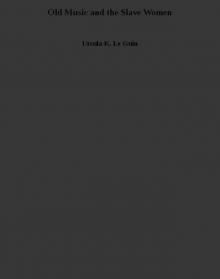 Old Music and the Slave Women
Old Music and the Slave Women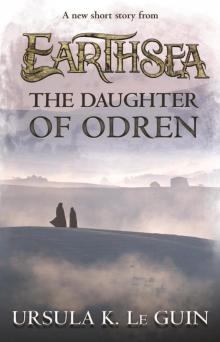 The Daughter of Odren
The Daughter of Odren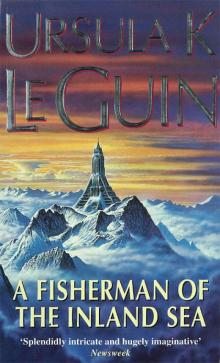 A Fisherman of the Inland Sea: Stories
A Fisherman of the Inland Sea: Stories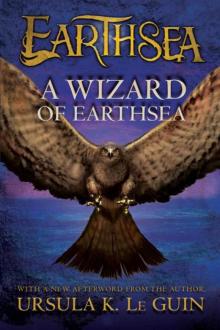 A Wizard of Earthsea (The Earthsea Cycle)
A Wizard of Earthsea (The Earthsea Cycle)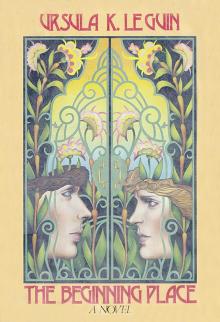 The Beginning Place
The Beginning Place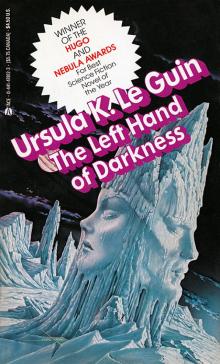 The Left Hand of Darkness
The Left Hand of Darkness The Farthest Shore (Earthsea Cycle)
The Farthest Shore (Earthsea Cycle) The Matter of Seggri botw-2
The Matter of Seggri botw-2